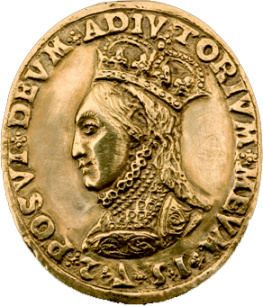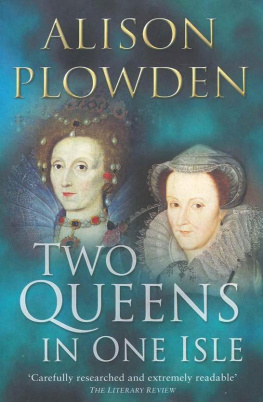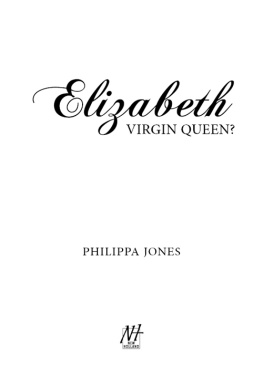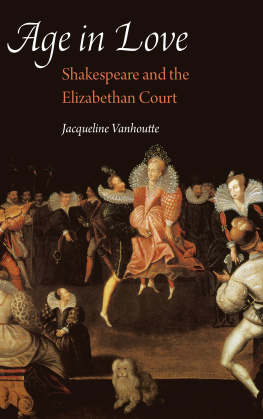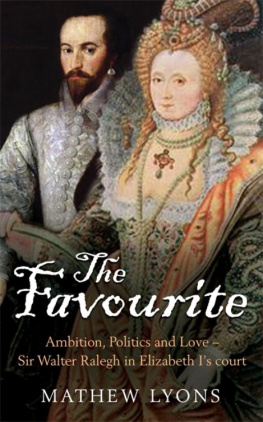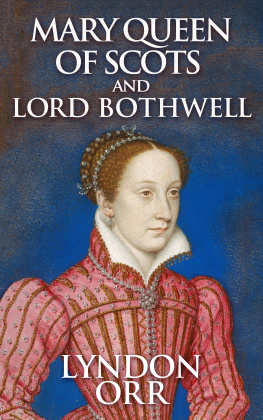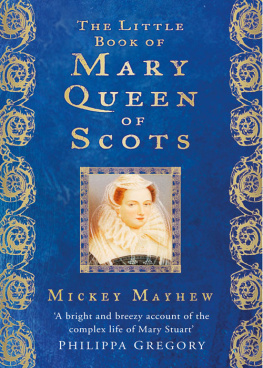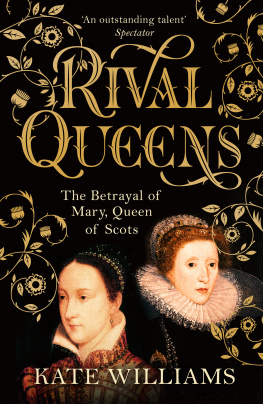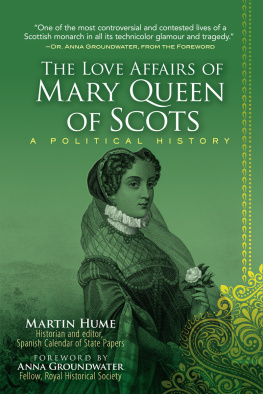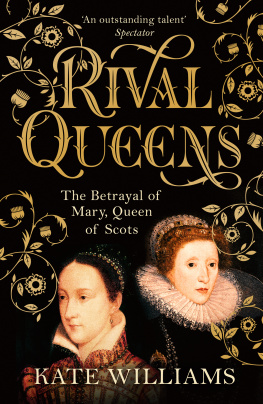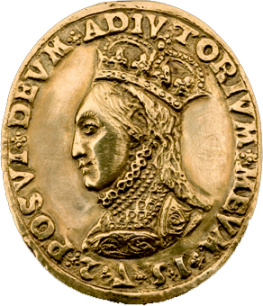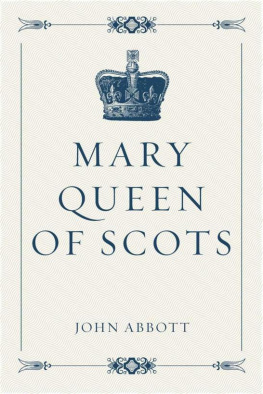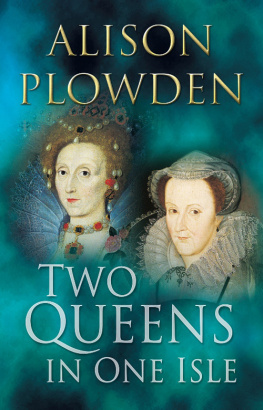
The B ETRAYAL of M ARY , Q UEEN of S COTS
The BETRAYAL of
MARY, QUEEN of SCOTS
Elizbeth I and Her Greatest Rival

KATE WILLIAMS

PEGASUS BOOKS
NEW YORK LONDON
James V and Mary of Guise. Public domain.
Mary of Guise. GL Archive/Alamy Stock Photo.
Mary, Queen of Scots family tree. Public domain.
Henry VIII with his children. Art Collection 3/Alamy Stock Photo.
Elizabeth I as a young woman. Getty Fine Art/Contributor.
Mary, Queen of Scots in her teenage years. Public domain.
Francis, the Dauphin. Getty Heritage Images/Contributor.
Rosary and prayer book belonging to Mary, Queen of Scots. His Grace The Duke of Norfolk, Arundel Castle/Bridgeman Images.
Elizabeth I in her coronation robes. Pictorial Press Ltd/Alamy Stock Photo.
Locket ring. Heritage Image Partnership Ltd/Alamy Stock Photo.
Mary, Queen of Scots by Franois Clouet. Getty Fine Art/Contributor.
Commemorative medal. Science Museum, London.
Holyroodhouse. The Picture Art Collection/Alamy Stock Photo.
James Stewart, Earl of Moray. Public domain.
Robert Dudley, Earl of Leicester. Getty/Dea Picture Library/Contributor.
Henry Stuart, Lord Darnley. ART Collection/Alamy Stock Photo.
Lennox Jewel. Royal Collection Trust/ Her Majesty Queen Elizabeth II, 2018.
David Rizzio. Royal Collection Trust/ Her Majesty Queen Elizabeth II, 2018.
Marys chambers. Royal Collection Trust/ Her Majesty Queen Elizabeth II, 2018; photographer: Peter Smith.
The Murder of David Rizzio. National Galleries/Presented by the 3rd Baron Strathcona and Mount Royal, 1927.
Mary, Queen of Scots with her son, James VI. Granger, NYC/TopFoto.
James Hepburn, Earl of Bothwell. Getty/Dea Picture Library/Contributor.
Kirk oField after the murder of Darnley. The National Archives.
The Mermaid and the Hare. The National Archives.
Elizabeth I, aged around forty-two. Getty/Dea Picture Library/Contributor.
Letter from Elizabeth to Mary, February 1567. British Library, London, UK/ British Library Board. All Rights Reserved/Bridgeman Image.
Dunbar Castle. Getty/Universal History Archive/Contributor.
Letter from Elizabeth to Mary, December 1568. British Library, London, UK/ British Library Board. All Rights Reserved/Bridgeman Image.
Letter from Mary to Elizabeth, October 1571. Heritage-Images/TopFoto.
Thomas Howard, Duke of Norfolk. Public domain.
Marys ciphers and codes. The National Archives.
Babington postscript and cipher, July 1586. The National Archives.
Tutbury Castle. NorthScape/Alamy Stock Photo.
Trial at Fotheringhay Castle. Granger, NYC/TopFoto.
Execution warrant for Mary, Queen of Scots, 1587. Lambeth Palace Library, London, UK/Bridgeman Images.
Armada Portrait by George Gower. Getty/ Universal History Archive/Contributor.
T he axe lay in a wooden box, cushioned, locked up in Mr Bulls modest home. He had been long expecting to use it for this, the biggest job of his life for he kept up with the news and the pamphlets and he knew what was afoot, as anyone would, no matter what the queen and Cecil said officially. He had polished the axe, tended it, ensured the blade was shining. Finally, Walsinghams messenger came on his fine horse and Mr Bull saddled up his own, packed up his mask and cape, and tied the box containing the axe to his saddle. He sent a messenger to call for his assistants to accompany him. The three men rode quickly north. They stopped at taverns on the way but spoke to nobody, keeping away from the crowds and stowing the box in their rooms. Bull and his men had not been told for whom they and their axe were destined, but they could guess. They were nervous. They knew they would be expected to perform the job with speed and skill. No one forgot tales of executions that had taken ten or more blows. Nearly fifty years before, a fellow executioner had missed the neck of Margaret Pole when she knelt over the block and caught only her shoulder it took eleven blows to kill her, during which she attempted to escape and was hauled back, screaming, to the block. Mr Bull knew he must kill in one blow. Particularly as it was a woman.
There was no room at the castle where the captive was held, too full of dignitaries who had come to observe. Bull and his men had been due to stay at the nearby home of Sir Walter Mildmay, but on arrival, they had been turned away, the man in charge of the household declaring it impossible. Mr Bull presumed Sir Walter had changed his mind about hosting an executioner and his axe; this was not uncommon. They took up at a local inn under extreme secrecy. No word could get out as to why they were there in case she tried to escape or, worse, the queen heard of the matter and tried to put a stop to it. Already, it was risky that they had had to ride first to Sir Walters and then on to the inn the place was crawling with spies and they had made themselves conspicuous. They tried to hide, keep close. Mr Bull and his assistants dined together and received a message from the castle that all was ready to proceed. The innkeeper had become used to strange people coming to stay, foreigners who looked like spies, wild-eyed young men, priests in disguise, men whispering in corners. The captive at the castle was good business for him and he did not ask questions.
The scaffold was erected overnight. On the early morning of 8 February 1587, Mr Bull and his assistants picked up the axe and put it upon his horse. Before the inhabitants of the town were even awake, they rode out to the castle, leaving the inn and the lives of ordinary Englishmen behind.
In her rooms, at the castle, Mary, Queen of Scots had been awake all night. Waiting.
I am no longer who I once was, wrote Mary, Queen of Scots towards the end of her life. Elizabeth and Mary were two queens, ruling one island. One has always been seen as a success, the other often as a failure, at best a tragic queen. But Marys very act of fighting for her rule should be looked at anew. She tried to rule as a king and she died for her decisions.
Mary set out on life with every possible glory and ended with nothing, her heart taken from her body and secretly buried. And in signing the final act which condemned her cousin to execution, Elizabeth I lost some of herself. Marys end meant the death of a small part of all monarchs. For if a queen can be executed, what makes her royal at all?
The life of Mary, Queen of Scots throws up vital questions about how we think of women and their right to rule. Kings can be autocratic, usually are. But queens give up some power to survive. They must work more closely with ministers, accept the views of others. They are hailed as skilled in compromise and bringing people together, whereas kings are congratulated for deciding, commanding. I have dedicated much study to queens and it is clear that the progress of the state, the machinery of government and the power of parliament moves forward in the reigns of women.
Elizabeth could not have had more devoted ministers than William Cecil or Francis Walsingham, but they went behind her back. Victoria is seen as the first post-Reform Act Queen, castigated for showing favour to her prime ministers when her predecessors had done worse. And Elizabeth II is hailed as the ultimate constitutional monarch. Perhaps women are uniquely suited for the constitutional role. Or perhaps they are simply not given the same latitude as a king.
Mary is seen as misguided. But if we view her in terms of queenship, we can judge her anew based on her attempt to create a successful model for female rule, tolerant, open to incorporating the views of her counsellors while staking her own claim to ultimate authority. Unfortunately, Marys lords and ministers tried to turn her into a figurehead, stage coups against her, and her attempts at tolerance collapsed into score settling and murder. But in England, Elizabeth pushed toleration and made it clear she would listen to advisors, and achieved great success. Perhaps Mary could have survived the tempests that troubled her reign but unlike Elizabeth, who played the dance of courtship, Mary married. And she chose the two worst consorts in royal history, men whose failings would inflict lasting damage on her rule.
Next page
